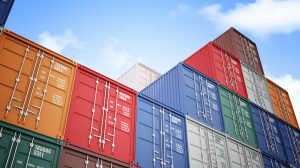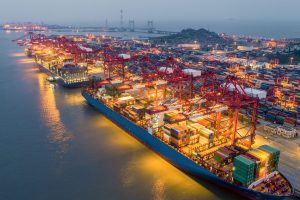– With the lack of competitiveness, the port of Santos stops handling around USD20 billion a year –
The resilience of economic activity in 2023 caused the IMF to raise its global growth estimate this year to 3%. However, the geopolitical scenario remains complex, with economic risks and tight credit. This panorama means that nations have greater hesitation when investing in infrastructure development projects. Although it is no different in Brazil, with an economic growth forecast of 2.1% this year, there are clear and potential investment opportunities such as the modernization of ports and deepening dredging, which would have very positive impacts on the local economy.
Cargo demand reached the ports’ operational capacity (in TEUs) in 2021, which makes expanding container terminals a priority for the segment. There is already a lack of space in the terminals, with an insufficient number of berth and draft. The depths of the port access channels are clearly deficient and are in urgent need of an adequate dredging program. To give you an idea, the port of Santos would now need to deepen its operational draft by 1.5m to serve the current ships that already frequent the port. With such a limitation, the sector stops transporting around one million tons per year.
For this modernization and expansion of ports, which are 15 years behind the world average in terms of access, short and long-term projects are needed, such as a rapid resumption of auctions for terminal concessions and dredging programs, which will help stimulate a new wave of investment.
“The loss of national competitiveness delays economic growth, also delaying development and the creation of new jobs opportunities in the country. To catch up with the world average, we need to invest in terminals with the capacity to handle larger, more energy-efficient ships; increase cargo storage capacity, keeping vessel productivity high when loading and unloading; and by using larger ships, not overloading the use of berths,” says Claudio Loureiro de Souza Executive Director of the National Center for Transatlantic Navigation (CENTRONAVE), which brings together 19 global shipowners operating in various forms of long-haul maritime transport. CENTRONAVE members handle around 97% of all Brazilian exports and imports in containers, serve 30 segments of the economy and open new markets for industry and agribusiness in around 170 countries.
“A dredging program will contribute to the arrival of a new generation of larger, more efficient ships. This will reduce fuel costs and environmental impact, since a larger ship consumes up to 68% less fuel per TEU transported,” adds Loureiro.
Due to a lack of competitiveness, the port of Santos, the largest in Latin America, fails to handle around 500,000 TEUs a year, which generates an estimated loss of USD21 billion a year in revenue from imports and exports, directly affecting the country’s trade balance. Today, Brazil only receives ships of up to 11,500 TEUs, while Asia, Europe and North America have the capacity to operate vessels of up to 24,000 TEUs.
About CENTRONAVE:
The National Center for Transatlantic Navigation is a non-profit associative entity, founded in 1907, which currently brings together 19 globally operating shipowners, among the largest in the world, operating in various forms of long-haul maritime transport, including bulk, general cargo, project cargo, forestry products, roll-on-roll-off and containers, a segment in which it handles around 97% of export and import cargo in Brazilian foreign trade.




